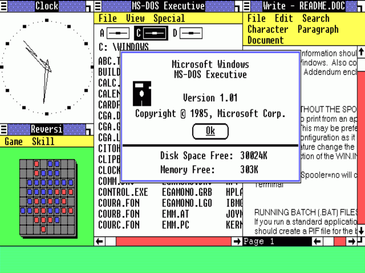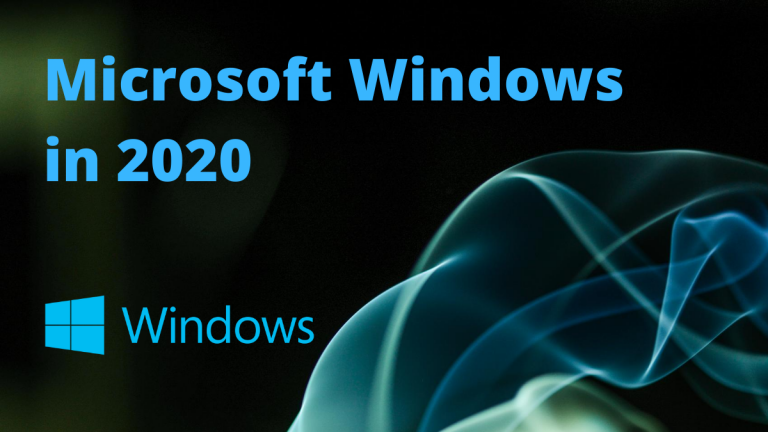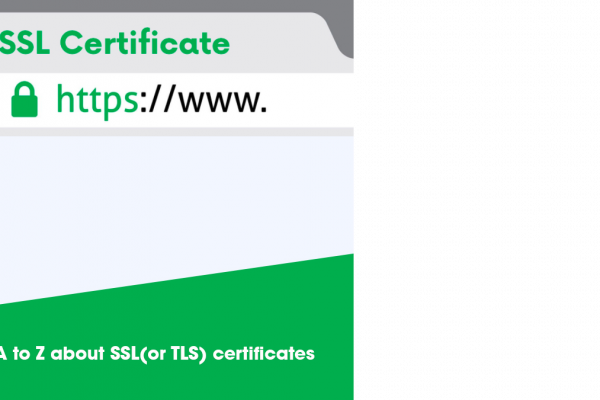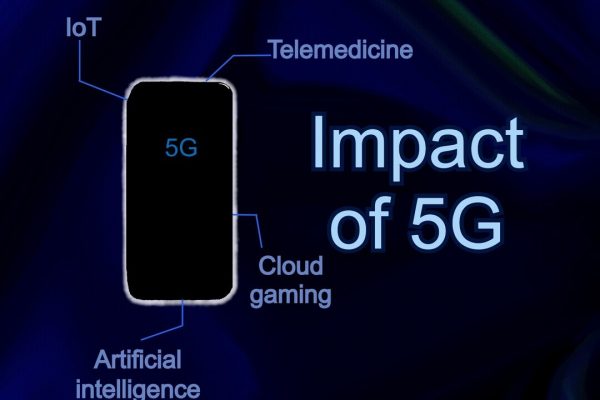Since the first version of Microsoft Windows was released in 1985, it has undergone a series of changes over the years. When it launched, the Windows 1 relied heavily on the use of a mouse on a graphical user interface, at a time when most of the computing used commands through a keyboard. And now it is at Windows 10, available both for laptops and tablets, capable of operating through a touchscreen interface.
Let’s see what’s new in Windows 10 in 2020. But before that have a look at a brief history of Windows.
History of Windows
November 1985: Windows 1 released, with a graphical user interface. All windows were tiled, no overlapping windows

December 1987: Windows 2 released. First appearance of Microsoft Word and Microsoft Excel. Allowed overlapping windows
May 22 1990: Windows 3 released. Upgrades for Microsoft Word, Microsoft Excel, and the first version of Microsoft PowerPoint. Windows 3 and 3.1 made Windows more popular and came installed in many new PCs.
August 1995: Windows 95 released win32 API, which is still being used in Windows 10. The famous Start Button was also introduced, along with Internet Explorer.
1997: The first version of Visual Studio released.
February 2002: .NET Framework was introduced.
2012: Windows 8 released as a hybrid OS for both tablets, smartphones, and PCs.The Windows Store was also introduced.
2014: Satya Nadella promoted as CEO, beginning the transformation of Microsoft.
2015: Windows 10 released.
2016: Acquisition of Xamarin, an open-source platform for building modern and performant apps in iOS, Android, and Windows with .NET
2018: Acquisition of GitHub for $ 7.5 billion. In a blog post, CEO Satya Nadella said that the move was aimed at bringing Microsoft’s developer tools and services to a larger audience.
2020: .NET 5 release in November (currently in beta).
Some of the best features of Microsoft Windows 10 as of 2020
Windows Sandbox
Windows sandbox was introduced in the Windows 10 May 2019 update. It creates a safe environment to test applications, or to see how malware works, or install trial versions of software, without them affecting the entire system. It’s basically a temporary virtual machine. It is available only for professional or enterprise users. (All though home users can get it through some hacks.)
The Windows Sandbox is lightweight, taking up only 100 MB of storage space. You can use this if you want to visit a potentially dangerous website or test a browser extension, simply open up the sandbox. If something does go wrong, you can be assured that your system is not affected. Simply close the sandbox, and all the applications and files are deleted.
Linux Subsystem
Windows Subsystem for Linux was launched in June 2019(stable release) and is a compatibility layer for running Linux Binary Executables natively on Windows 10. With this you can run command-line tools such as grep, sed, awk and others. The Linux distributions can interact with windows access windows files and edit them.
The Windows Subsystem for Linux lets developers run a GNU/Linux environment — including most command-line tools, utilities, and applications — directly on Windows, unmodified, without the overhead of a traditional virtual machine or dual boot setup. And you can choose your favourite GNU/ Linux subsystems from the Microsoft Store. And, it’s super easy to install as well, anyone can do it within minutes.
Task View, Virtual desktops and Timeline
Task view is something everyone is familiar with on Windows 10. It is similar to Mission Control on macOS. With this feature, first introduced in Windows 10, you can view all the open windows easily, and locate the window you want to work on. It makes it easy to manage multiple monitors and virtual machines.
Even though the Task Switcher has been around since Windows 3.0, it’s not easy to use if you have more than three windows open at the same time. The task view is particularly useful for multitasking. And since it is integrated with the new virtual desktop feature, you can switch between the virtual desktops easily. Windows 10 lets you create an unlimited number of virtual desktops, with its own set of apps and windows. You can switch apps between different desktops. So it’s like working on two or more laptops at the same time, but better.
Timeline is a relatively new feature in Windows 10 that extends the Task View feature. Here the activities on different devices are displayed chronologically. This depends on the Microsoft account you used to sign in and is not device-specific. The task view shows all your activities, websites you visited, the mobile apps you used, etc.
These three features let you become better at multitasking on Windows 10. If you’re working on three or more different tasks, you can have the same apps open for different tasks in different desktops and switch between them as needed.
Your Phone app
This is probably one of the coolest features of Windows 10. The app replaced the Phone Companion app and is used to connect to your Android Phone. This is similar to the continuity feature on iOS. You can view the pictures on your phone, make phone calls, send messages. Some features are currently in beta, and allow you to actually use the apps in your phone on your laptop or desktop. A copy-paste feature, that lets you send text or images from and to your phone is also currently in beta.

While the features are nowhere near what is possible with the Continuity feature supported by Apple, and all though Your Phone is years late, it is moving in a direction that I really like. While Apple’s continuity features appear as if designed to lock you into one ecosystem, the Your Phone appears to be more inclusive. For starters, you don’t need a Windows Phone(Not that you can have that in 2020). And Your Phone is not just limited to Android phones either. You can do the same with an iPhone too. And I’m loving this approach.
Windows Hello
Windows Hello brings biometric authentication to Windows. It lets you sign into your laptop or desktop using an IR camera or a fingerprint scanner. You won’t have to enter your passwords manually anymore.
But be warned, you can’t use Windows Hello with your standard laptop camera or webcam, and therefore the feature is available only for some devices. All though you can get standalone web cams you can plug into your device if you want Windows Hello.
Future: Windows 10x
A new version of Windows designed for dual-screen devices is expected to be released in 2020, but it may get delayed due to COVID-19. Apps will more or less work as they do in Windows 10, and most of them will be compatible. Although the final version may have some changes, Windows 10x appears to be optimized for dual-screen and multitasking. Support for Win32 apps may not be available at the time of release though.
While the OS is supposedly for dual-screen devices only, there’s a chance all devices will get it in the future.




